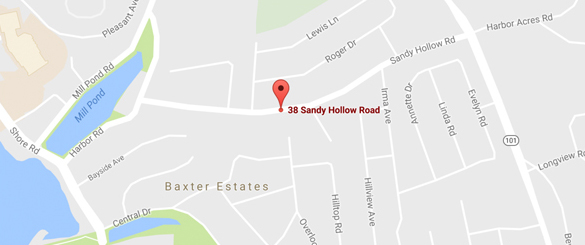Billing FAQs
Is there a “grace period” for payments?
There is no grace period. In keeping with New York State Town Law, the due date indicated on your bill is the absolute deadline.
What is the average bill?
Each consumer’s usage is determined by different variables, such as the number of people living in the home, size of lawn, size of house, etc. For this reason, we are unable to give a meaningful average.
Why is this bill higher than the last bill I received?
Many factors contribute to fluctuations in your water bill:
Weather fluctuations – Water consumption changes from one season to the next. For a more accurate comparison, examine bills from corresponding periods, for example 2022 vs. 2021.
Have living arrangements changed? Water consumption will increase if there are more people living in the residence.
Check for leaks. Dripping faucets inside and outside are obvious sources, but look for other less visible signs as well. Start in the bathroom. Listen for hissing noises around the toilet, which indicate a shut-off valve is leaking.
How do I detect a leak?
Leaks can happen both inside and outside your home, and even small ones can waste thousands of gallons of water. Here’s how to check for them:
1. Use your water meter.
Look at the flow indicator (the small red triangle) on your meter. If it’s moving when no water is running in your home, you have a leak somewhere on your property.
2. Use MyPWWD to monitor for leaks.
Our MyPWWD online water-use portal lets you track your water consumption 24/7 from any device to help catch leaks early—often before you notice them yourself. With MyPWWD, you can:
- See your real-time water usage.
- Set leak alerts or water-usage thresholds.
- Receive notifications if unusual or continuous water flow is detected.
- Monitor your home’s water use while you’re away.
3. Check outdoor areas.
Look for pooling water around sprinkler heads, and make sure outdoor faucets and hoses aren’t dripping or left running.
4. Check indoor fixtures.
- Inspect faucets and sinks for drips.
- Test toilets—these are one of the most common sources of “silent” leaks.
- If you have to jiggle the handle to stop it from running, it likely needs repair.
- To test for a hidden toilet leak, add a few drops of food coloring to the tank (or contact our office for leak detector tablets). Don’t flush for 5–60 minutes. If colored water appears in the bowl, the toilet is leaking.
- The most common issues involve the overflow pipe or the plunger/float assembly. A plumber may be needed for repairs.
If you suspect a leak and can’t locate it, we recommend contacting a licensed plumber.
Why do I still receive a water bill even if no water is being used?
Even if there is no water consumption you will still receive a minimum bill. This is because your water service is connected to the District’s main water supply system.



